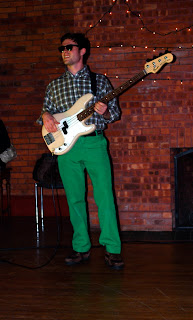For many college-aged students, surfing the web
is both a veritable skill and treasured past time. While you can attempt to
find the bottom of your News Feed (It doesn’t exist — I’ve tried!), you can
also use these skills to “peruse” the collection of your favorite museum. Nothing
compares to seeing a work of art in person, but some amazing initiatives exist
that combine art and technology in ways revolutionizing how we access visual
art. Far from your typical museum website, these projects demonstrate a
commitment to public education by providing inventive opportunities for
personal discovery. It doesn’t matter if you’re an art history expert or know
nothing about the subject, the following websites promise hours of enjoyment to
anyone with an Internet connection and a sense of curiosity:
Google Cultural Institute
The Google Cultural Institute makes available online cultural exhibitions through its partnerships with a
variety of arts institutions and heritage organizations. Within the institute, the Google Art Project publishes extremely high-resolution photographs organized for
maximum browsing potential. Zoom in to see textures and brushstrokes not easily
visible to the naked eye. You can also use the site’s compare feature to simultaneously
contemplate works located in, say, Italy and Brazil (and basically defy the
limitations of time and space, nbd).
Just as Google Maps’ Street View famously
enables users to view panoramic images of streets around the world, the Google
Cultural Institute employs similar technology to allow users to virtually visit
a number of cultural sites and institutions. Check out the Taj Mahal in
360-degrees or use Museum View to virtually walk through the galleries of the Isabella Stewart Gardner Museum. No longer must art viewed on the Internet
be removed from its architectural context or separated from the surrounding
works with which it converses.
Source: Google Cultural Institute
Artsy
With a collection of
over 140,000 artworks, Artsy.net similarly commits
to making art accessible to the masses. Partnered with over 1,800 galleries and
over 250 museums/institutions, Artsy seamlessly brings together the cutting
edge and the historical via fresh editorial content and extensive archives. You
can even buy original works off the site and start your very own collection. The
site’s real gem, however, is the Art Genome Project headed by Matthew Israel ’99. Often compared to Pandora Radio, the “recommendation
engine” enables you to find art similar to what you already like by categorizing
works and placing them in an easy-to-use format.
Source: Artsy.net
Instagram
In my opinion, posts
from the Metropolitan Museum of Art’s Instagram account
can easily be considered works of art themselves. From #tbt posts depicting
crowded, early 20th century gallery walls to their recent #emptymet campaign,
technology is allowing users to see the museum in ways otherwise impossible.
Better yet, since the posts automatically enter your feed, following @metmuseum
ensures you have an art-filled day with little to no effort on your part.
And the Met’s not alone; art museums, auction
houses and artists alike now run Instagram accounts regularly giving followers
behind-the-scenes information and updates. A highly visual medium, Instagram
proves to be perfect for sharing visual art.
Source: @metmuseum on Instagram
So what do you think? Does
viewing art this way detract from the experience or do these projects mark an
exciting new era of open access in the arts?
























































